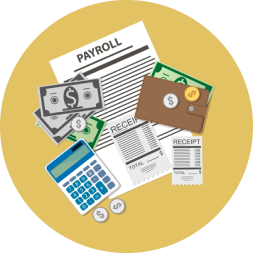Annual premium audits
Workers’ compensation premiums are based on your payroll amounts. At the beginning of your policy period, we calculate the premium based on what you estimate your payroll will be. Once your policy period has ended, we make sure what we charged was fair. During the premium audit, we look at your actual payroll amounts, and you may receive a return or an additional charge as a result.
Premium audits are a standard practice in workers’ compensation insurance, and every policyholder does one each year. Even policyholders with no employees must complete an audit to confirm their employee count and total payroll are accurate for the policy period.

What to expect
During this process you will:
- Receive a letter and/or email with instructions
- Gather your payroll information and supporting documents
- Submit your payroll information online, by email, or in person
- Wait for an SFM auditor to review your information and determine your final premium amount
- Receive a Statement of Audit by mail or email providing your final premium amount
- Receive a bill, premium deduction, or check if the audit results in a premium adjustment
How to prepare
You can prepare for your audit by taking the following steps:
- Review the list of supporting documents you will need to submit
- Gather and save certificates of insurance for any subcontractors you hired during your policy period
- Watch for letters and emails from SFM notifying you about your upcoming audit after your policy period ends
For more details, review our frequently asked questions below and see our Tips for a smooth premium audit blog post.

Did you receive a letter to complete your premium audit online?
Complete it through MyPayroll here.
Frequently asked questions
Find answers to common premium audit questions.
Why is my workers’ compensation policy audited each year?
Your workers’ compensation premium is based on your estimated payroll, but payroll can change due to changes in workforce size, employees working overtime or operations expanding. For that reason, at the end of your policy period, we audit the last year and adjust your premium to reflect any changes. Even policyholders who have no employees must complete an audit to confirm their employee count and total payroll are accurate for the policy period.
I am the only owner of my business and have no employees. Do I still need to complete a premium audit?
Yes. You need to provide records confirming that you are still a single member owner with no employees. You will need to complete the online or paper premium audit and provide your business tax documentation.
Where can I find my user ID and password?
Your user ID and password can be found on the letter and/or email you received from your SFM auditor. If you lost your user ID and password, call SFM at (800) 937-1181 to obtain your credentials.
I am a contractor who uses subcontractors. What do I need to provide?
When it’s time for your premium audit, we’ll need:
- A list of all subcontractors and/or 1099 workers that includes job descriptions and individual gross wages for the policy period
- Copies of the 1099 Forms and 1096 Forms
- Certificates of general liability and/or workers’ compensation coverage for each subcontractor
What is the difference between a subcontractor and a vendor?
A vendor is someone who provides goods or services to you that are not part of the goods or services that you provide to your customers. For example, if an accounting firm hires a plumber to fix its water heater, the plumber is a vendor. If the accounting firm hires an independent accountant to help prepare taxes during its busy season, the accountant is a subcontractor.
What if my policy dates do not coincide exactly with my payroll records?
If your policy period dates do not directly coincide with your payroll records (for instance, the policy effective date is not the first of the month on your monthly records), you may provide records for a different period as long as the beginning and ending dates are within 16 days of the actual policy period.

